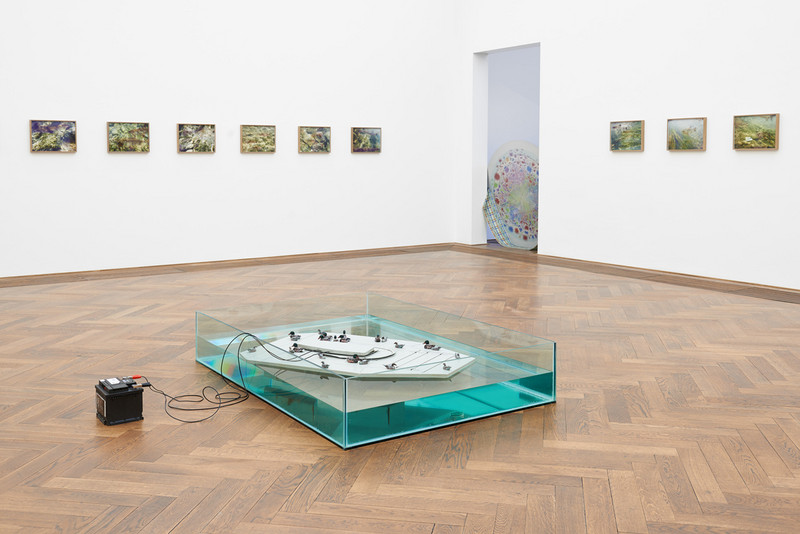Marina Pinsky
22 Jan - 17 Apr 2016
MARINA PINSKY
Dyed Channel
22 January – 17 April 2016
One critic called it her “object-image tension.” The Moscow-born artist Marina Pinsky has, ever since her days studying photography in Los Angeles, made artworks that sit uneasily between photography and sculpture. Even some of her early staged photographs, the most seemingly straightforward of her uses of the medium, included elaborate props made by hand and then photographed in order to give the result sculptural dimensionality. And in nearly all her works since, her diverse means of overlaying images, embedding photography into the substrate of various materials, or even conceiving of and producing sculpture via photographic methodologies have entangled the two mediums.
For Dyed Channel, the artist’s first major institutional solo show and her first presentation in Switzerland, the young artist turned her lens to Basel. In making her work, Pinsky has often visited and been inspired by museums, both mainstream and obscure, as if even the most oddball collection might contain a key to decrypting the world. Previous work emerged from her visits to the Devil’s Rope Barbed Wire Museum in Texas, or the Havre de Grace Decoy Museum in Maryland. While preparing her Kunsthalle Basel project, Pinsky visited the Pharmacy Museum Basel, the Anatomical Museum, the Roche Historical Collection and Archive, the Novartis Campus (a “collection” of sorts, of buildings by star architects), and the Natural History Museum, among others. The photographic logic so relevant for thinking about her methods extends to the artist herself: almost acting as a sensitized photographic plate, she—and subsequently her work—become imprinted with the traces of her visits to these sites.
Dyed Channel
22 January – 17 April 2016
One critic called it her “object-image tension.” The Moscow-born artist Marina Pinsky has, ever since her days studying photography in Los Angeles, made artworks that sit uneasily between photography and sculpture. Even some of her early staged photographs, the most seemingly straightforward of her uses of the medium, included elaborate props made by hand and then photographed in order to give the result sculptural dimensionality. And in nearly all her works since, her diverse means of overlaying images, embedding photography into the substrate of various materials, or even conceiving of and producing sculpture via photographic methodologies have entangled the two mediums.
For Dyed Channel, the artist’s first major institutional solo show and her first presentation in Switzerland, the young artist turned her lens to Basel. In making her work, Pinsky has often visited and been inspired by museums, both mainstream and obscure, as if even the most oddball collection might contain a key to decrypting the world. Previous work emerged from her visits to the Devil’s Rope Barbed Wire Museum in Texas, or the Havre de Grace Decoy Museum in Maryland. While preparing her Kunsthalle Basel project, Pinsky visited the Pharmacy Museum Basel, the Anatomical Museum, the Roche Historical Collection and Archive, the Novartis Campus (a “collection” of sorts, of buildings by star architects), and the Natural History Museum, among others. The photographic logic so relevant for thinking about her methods extends to the artist herself: almost acting as a sensitized photographic plate, she—and subsequently her work—become imprinted with the traces of her visits to these sites.

